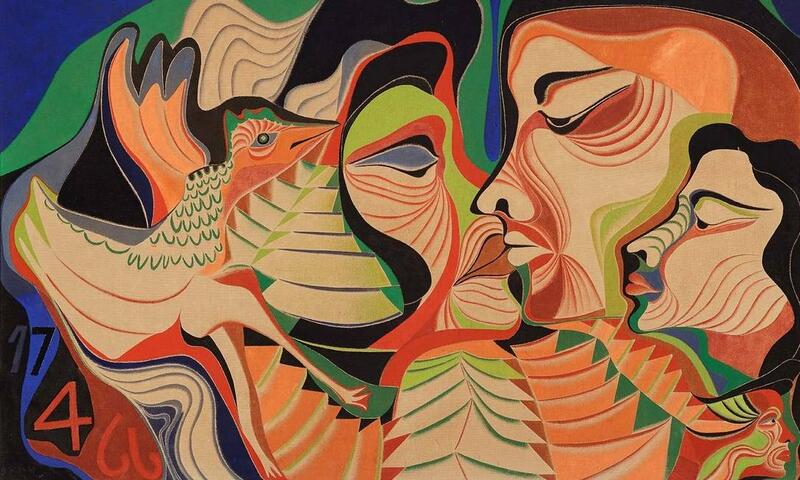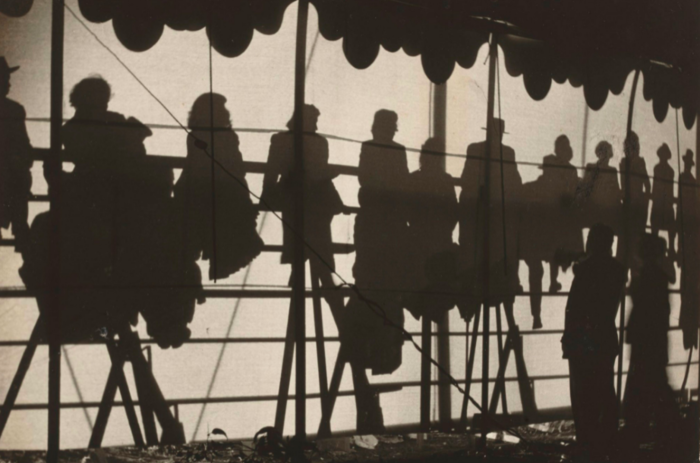GEOMETRIC AND INTUITIVE, ARTIST AT HEART - IVAN SERPA - THE EXPRESSION OF CONCRETE

Four human figures intertwined in nonlinear positions, organically and chromatically linked - and still together of a bird. The considerable scale oil - 1x1.50m - Beijo (1966) can sum up the breathtaking panorama that the Banco do Brasil Cultural Center in São Paulo (CCBB-SP) dedicates to Ivan Serpa, a leading artist in the Brazilian construction movement and, at the same time, author of some of the main pictorial records affiliated with expressionism in the country.
Deceased at a young age (1923-1973), when he still had a lot to contribute to the corpus of Brazilian art, the artist from Rio de Janeiro has in this painting much of the multiplicity of paths he has traveled in his career. With a sober background in the manner of concretes, the figuration of the couple decomposed into levels and waves related to a more sensitive and less schematic geometric, the freer use of color and the rarity of the exhibition - the work belongs to the artist's family and is shown only in broader exhibitions - they are all factors that make the retrospective of about 200 pieces an almost mandatory visitation feature within the visual arts circuit of the city.
Beijo is flanked by another finding in the clipping, Nossa Senhora (1966), an oil of 1.16x0.9m that juxtaposes curved lines of the most central human figures in the composition, with emphasis on green and blue, seated on a background in which ocher and reddish lines give a certain order to the configuration. It is another rarity exposed, coming from a private collection.
There are two works that attest to the unique production of Serpa, whose main phases are now presented at the institution located in the Center of SP. Through the narrow exhibition rooms in the center - an old bank of historical features that has become a cultural space and has clear physical limitations -, it is possible to have an idea of the artist's creative freedom, which, in addition to the facets already highlighted, also embraced ideas of abstractionism, op art, 70's experimentalism and the intimacy of erotic art, among other aspects.
In addition to the research of the curators, who obtained loans from good national collections, the availability of the heirs, apparently, could give the clipping the surprise of less-seen works and the extension of the program proposed by Ferreira and Lontra. Even though iconic works by the artist, such as Rhythmic Stripes (1953), from the Adolpho Leirner Collection (today at the Museum of Fine Arts in Houston, USA), are not present, there are good constructive pieces - and lesser known ones - such as Barcelona Book ( c. 1959), Concretist Screen (1952) and Squares with Resulting Rhythms (c. 1953).
-
Rhythmic stripes, 1958 - oil on canvas - 97 x 130 cm - Collection Ronaldo Cezar Coelho
-
Book Barcelona, circa 1959 – printed - 680 x 20 cm - Collection Gustavo Rebello Arte
-
Concretist screen, 1952 - oil on wood - 160 x 210 cm - Collection Ronaldo Cezar Coelho
-
Squares with resulting rhythms, circa 1953 - industrial paint on wood - 100 x 100 cm - Private collection RJ
And the expressionist facet, so celebrated when remembering the artist's legacy, is exhibited in a room with a more dramatic expography than the rest, for obvious reasons. Formerly called the Black Phase and today better known as Twilight, it is a poignant cry of indignation at the horrors perpetrated by man and performed by Serpa in 1964, the year in which the military regime began in Brazil. Large oils and drawings would become a reference in the current in Brazil, side by side with Goeldi's graphic solitude (1895-1961), with the horrors of Segall's war (1889-1957) and with the series by Flávio de Carvalho (1899- 1973) portraying the mother in the throes of life.
However, The Expression of Concrete can end in a more solar key. On the upper floors of the São Paulo institution, it is possible to have contact with Serpa's latest works, between the late 60's and the beginning of the subsequent decade. The series Mangueira, Amazônica and Geomântica seem to attest to the formal concerns that have always accompanied the artist, but this time in the service of a fresher and more open chromatism. On the screens, the discipline of the well-arranged elements continues, but the plastic-visual relations seem to be guided by a great freedom and by a more sensorial character.
-
Mangueira Series: Untitled, 1968 - oil on canvas - 60 x 60 cm - Collection Arnoldo and Tania Wald
-
Amazônica Series # 8, 1968 - oil on canvas - 92 x 92 cm - Private collection
-
Amazônica Series # 13, 1968 - oil on canvas - 141 x 141 cm - Private collection
-
(left) Geomântica Series: Untitled, 1972 - oil on canvas - 200 x 138 cm - Collection Serpa Family; (right) Geomântica Series: Untitled, 1972 - oil on canvas - 200 x 138 cm - Collection Marco Greco
Professor of many artists, professional who moved away from the dogmatic booklets of some of the groups at the time, this closure fulfills with praise the always experimental vein that was with Ivan Serpa throughout his journey. A breath of fresh air in our uncertain days.
Ivan Serpa - The expression of concrete
Curators: Hélio Ferreira and Marcus Lontra
Until April, 12th
Centro Cultural Banco do Brasil SP





